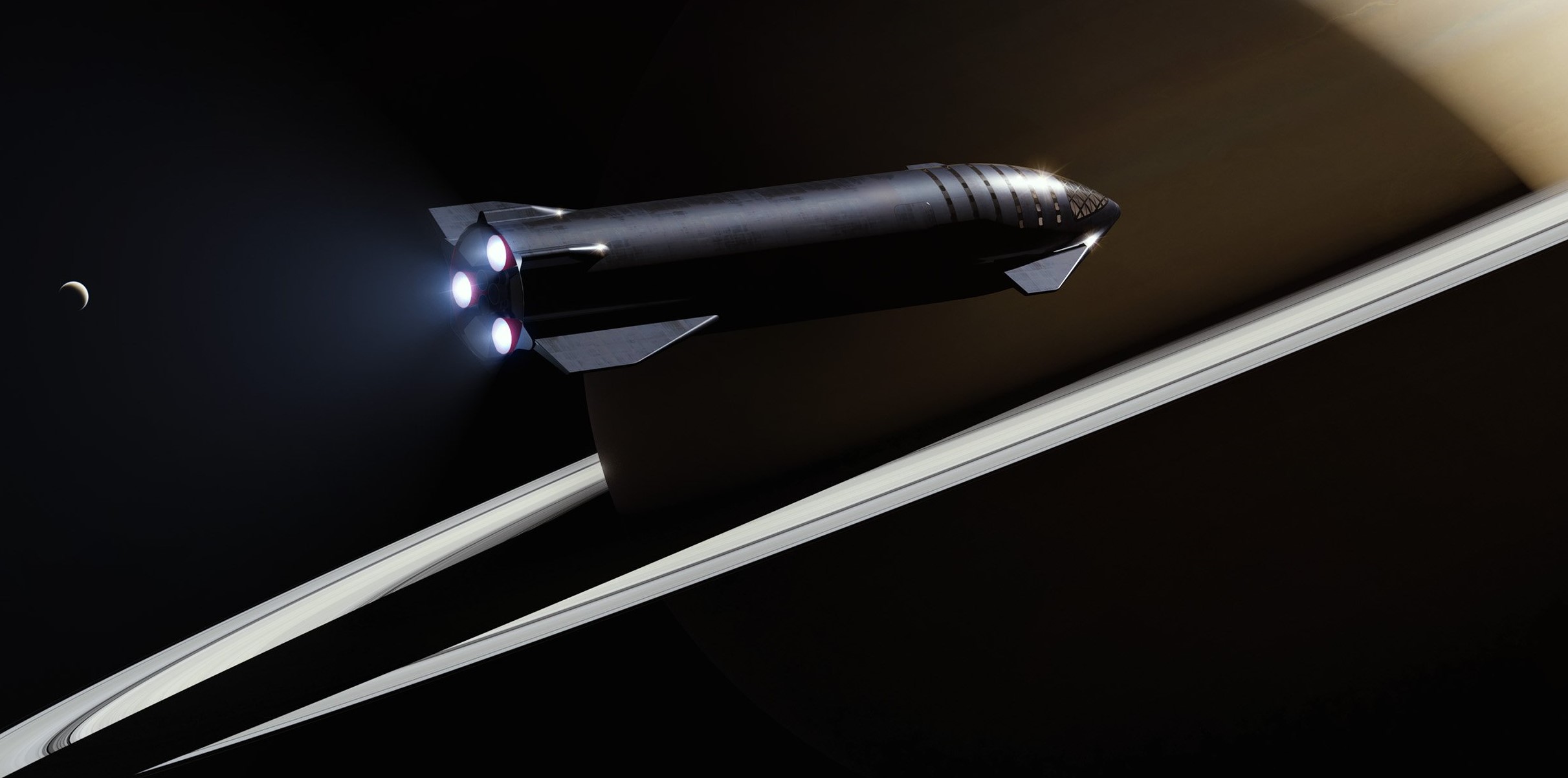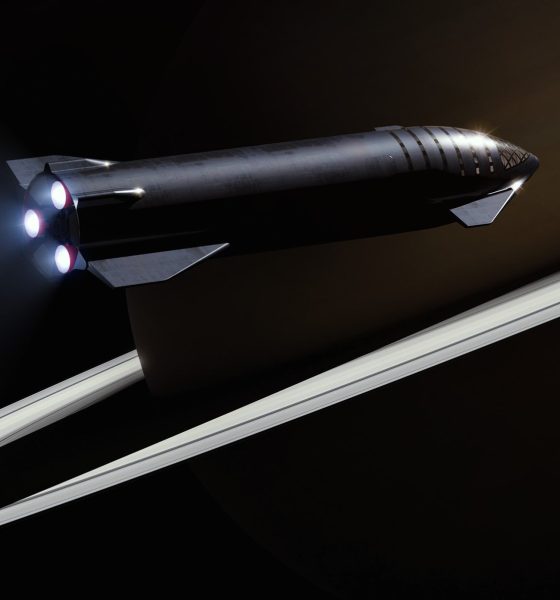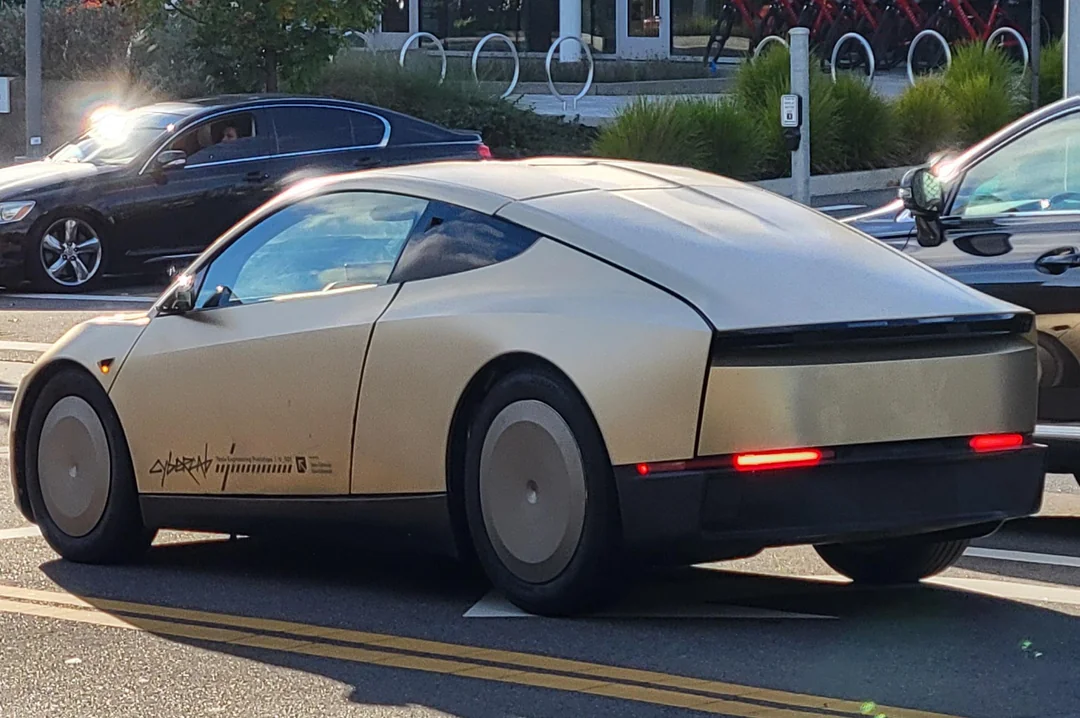

News
SpaceX CEO Elon Musk teases nine-engine Starship, Raptor upgrades
In his latest round of SpaceX-related tweets, CEO Elon Musk says that the company has plans to boost Raptor’s performance by at least 15% and the number of those engines installed on Starship by 50%.
Those updated goals came hand in hand with significant changes to the design and operation of both Starship and its Super Heavy booster, which at one point was expected to utilize a “Boost” variant of Raptor that would trade thrust vector control (TVC; i.e. gimballing) and a wide throttle range for far greater thrust. At least according to Musk’s latest account, that substantially different “Raptor Boost” variant is now no more.
On July 3rd, NASASpaceflight forum member and photographer BocaChicaGal captured photos of SpaceX delivering three new Raptor engines to its Boca Chica Starship factory. Two of those engines (RB3 and RB4) featured Raptor Boost labels and were likely the first engines of their kind to complete qualification testing in McGregor, Texas. As of their arrival in South Texas, it was assumed that Raptor Boost still represented a variant of the engine with almost 50% more thrust at the cost of gimbal and throttle authority.
However, Musk himself replied to some of the resulting tweets later that evening, revealing that Super Heavy’s outer ring of up to 20 “Raptor Boost” engines would indeed have no ability to gimbal but would still be able to throttle.
Later the same day, the SpaceX CEO clarified further, stating that the company now plans to upgrade Raptor’s existing design to boost engine thrust to ~230 tons (~510,000 lbf) while still maintaining a wide throttle range and optional thrust vector control. With such an engine, “all Raptors on [a Super Heavy] booster, whether fixed or gimbaling, would be the same.” The only unique aspect of “Raptor Boost,” then, would be their installation around the inner ‘ring’ of Super Heavy’s skirt and their resulting lack of gimbal authority.
It’s somewhat unclear, then, why two of the engines SpaceX delivered on July 3rd were labeled “RB#” and one explicitly outfitted with a name tag reading “Hello, my name is Boost.” Notably, a quick side-by-side comparison enabled by those photos strongly implies that Raptor Booster engine 3 (RB3) and Raptor 79 (R79) are virtually identical aside from RB3’s rerouted plumbing and unique mounting hardpoints. In other words, barring surprises, the “boost” nomenclature appears to be more vestigial than anything.
Ultimately, as Musk notes, if SpaceX manages to boost “Raptor 2” to 230 tons of thrust, a Super Heavy booster with 33 mostly identical engines would have a peak liftoff thrust around 7600 tons (~16.8 million lbf), translating to a thrust to weight ratio of more than 1.5. For a large rocket with liquid propulsion only, a TWR greater than 1.5 is very respectable and improves acceleration off the launch pad, reduces gravity losses in the first few minutes of ascent, and thus boosts overall efficiency.
Already, Musk’s implication that 33 engines could ultimately be installed on Super Heavy is a departure from comments the CEO made barely a month ago when he revealed a base increase from 28 to 29 engines with the possibility of expanding to 32 down the road. Also new is the implication that SpaceX is considering adding three more vacuum-optimized engines to Starship’s six planned Raptors, leaving ships with six Raptor Vacuum (RVac) engines and three sea level-optimized engines (the same variant on Super Heavy).
Musk says that SpaceX has yet to decide if Raptor Vacuum will be commonized with Raptor 2, boosting its thrust, or if greater efficiency will be pursued instead. Regardless, even with six 200-ton-thrust RVacs and three Raptor 2s, Starship would produce upwards of 2000 tons of thrust in vacuum, creating an upper stage with almost as much thrust as Falcon Heavy and a fully-fueled thrust to weight ratio of ~1.7 – even better than Super Heavy.

News
Tesla Model 3 named New Zealand’s best passenger car of 2025
Tesla flipped the switch on Full Self-Driving (Supervised) in September, turning every Model 3 and Model Y into New Zealand’s most advanced production car overnight.

The refreshed Tesla Model 3 has won the DRIVEN Car Guide AA Insurance NZ Car of the Year 2025 award in the Passenger Car category, beating all traditional and electric rivals.
Judges praised the all-electric sedan’s driving dynamics, value-packed EV tech, and the game-changing addition of Full Self-Driving (Supervised) that went live in New Zealand this September.
Why the Model 3 clinched the crown
DRIVEN admitted they were late to the “Highland” party because the updated sedan arrived in New Zealand as a 2024 model, just before the new Model Y stole the headlines. Yet two things forced a re-evaluation this year.
First, experiencing the new Model Y reminded testers how many big upgrades originated in the Model 3, such as the smoother ride, quieter cabin, ventilated seats, rear touchscreen, and stalk-less minimalist interior. Second, and far more importantly, Tesla flipped the switch on Full Self-Driving (Supervised) in September, turning every Model 3 and Model Y into New Zealand’s most advanced production car overnight.
FSD changes everything for Kiwi buyers
The publication called the entry-level rear-wheel-drive version “good to drive and represents a lot of EV technology for the money,” but highlighted that FSD elevates it into another league. “Make no mistake, despite the ‘Supervised’ bit in the name that requires you to remain ready to take control, it’s autonomous and very capable in some surprisingly tricky scenarios,” the review stated.
At NZ$11,400, FSD is far from cheap, but Tesla also offers FSD (Supervised) on a $159 monthly subscription, making the tech accessible without the full upfront investment. That’s a game-changer, as it allows users to access the company’s most advanced system without forking over a huge amount of money.
News
Tesla starts rolling out FSD V14.2.1 to AI4 vehicles including Cybertruck
FSD V14.2.1 was released just about a week after the initial FSD V14.2 update was rolled out.

It appears that the Tesla AI team burned the midnight oil, allowing them to release FSD V14.2.1 on Thanksgiving. The update has been reported by Tesla owners with AI4 vehicles, as well as Cybertruck owners.
For the Tesla AI team, at least, it appears that work really does not stop.
FSD V14.2.1
Initial posts about FSD V14.2.1 were shared by Tesla owners on social media platform X. As per the Tesla owners, V14.2.1 appears to be a point update that’s designed to polish the features and capacities that have been available in FSD V14. A look at the release notes for FSD V14.2.1, however, shows that an extra line has been added.
“Camera visibility can lead to increased attention monitoring sensitivity.”
Whether this could lead to more drivers being alerted to pay attention to the roads more remains to be seen. This would likely become evident as soon as the first batch of videos from Tesla owners who received V14.21 start sharing their first drive impressions of the update. Despite the update being released on Thanksgiving, it would not be surprising if first impressions videos of FSD V14.2.1 are shared today, just the same.
Rapid FSD releases
What is rather interesting and impressive is the fact that FSD V14.2.1 was released just about a week after the initial FSD V14.2 update was rolled out. This bodes well for Tesla’s FSD users, especially since CEO Elon Musk has stated in the past that the V14.2 series will be for “widespread use.”
FSD V14 has so far received numerous positive reviews from Tesla owners, with numerous drivers noting that the system now drives better than most human drivers because it is cautious, confident, and considerate at the same time. The only question now, really, is if the V14.2 series does make it to the company’s wide FSD fleet, which is still populated by numerous HW3 vehicles.
News
Waymo rider data hints that Tesla’s Cybercab strategy might be the smartest, after all
These observations all but validate Tesla’s controversial two-seat Cybercab strategy, which has caught a lot of criticism since it was unveiled last year.

Toyota Connected Europe designer Karim Dia Toubajie has highlighted a particular trend that became evident in Waymo’s Q3 2025 occupancy stats. As it turned out, 90% of the trips taken by the driverless taxis carried two or fewer passengers.
These observations all but validate Tesla’s controversial two-seat Cybercab strategy, which has caught a lot of criticism since it was unveiled last year.
Toyota designer observes a trend
Karim Dia Toubajie, Lead Product Designer (Sustainable Mobility) at Toyota Connected Europe, analyzed Waymo’s latest California Public Utilities Commission filings and posted the results on LinkedIn this week.
“90% of robotaxi trips have 2 or less passengers, so why are we using 5-seater vehicles?” Toubajie asked. He continued: “90% of trips have 2 or less people, 75% of trips have 1 or less people.” He accompanied his comments with a graphic showing Waymo’s occupancy rates, which showed 71% of trips having one passenger, 15% of trips having two passengers, 6% of trips having three passengers, 5% of trips having zero passengers, and only 3% of trips having four passengers.
The data excludes operational trips like depot runs or charging, though Toubajie pointed out that most of the time, Waymo’s massive self-driving taxis are really just transporting 1 or 2 people, at times even no passengers at all. “This means that most of the time, the vehicle being used significantly outweighs the needs of the trip,” the Toyota designer wrote in his post.
Cybercab suddenly looks perfectly sized
Toubajie gave a nod to Tesla’s approach. “The Tesla Cybercab announced in 2024, is a 2-seater robotaxi with a 50kWh battery but I still believe this is on the larger side of what’s required for most trips,” he wrote.
With Waymo’s own numbers now proving 90% of demand fits two seats or fewer, the wheel-less, lidar-free Cybercab now looks like the smartest play in the room. The Cybercab is designed to be easy to produce, with CEO Elon Musk commenting that its product line would resemble a consumer electronics factory more than an automotive plant. This means that the Cybercab could saturate the roads quickly once it is deployed.
While the Cybercab will likely take the lion’s share of Tesla’s ride-hailing passengers, the Model 3 sedan and Model Y crossover would be perfect for the remaining 9% of riders who require larger vehicles. This should be easy to implement for Tesla, as the Model Y and Model 3 are both mass-market vehicles.









